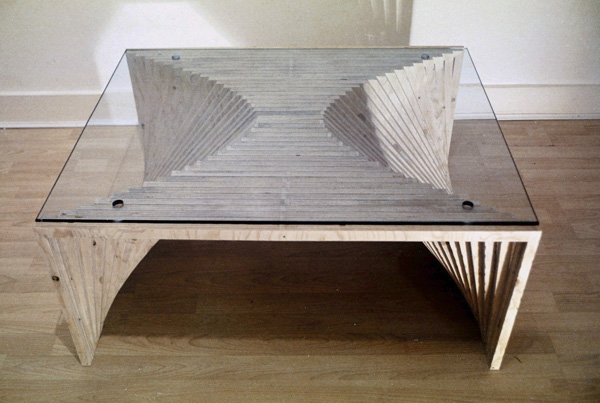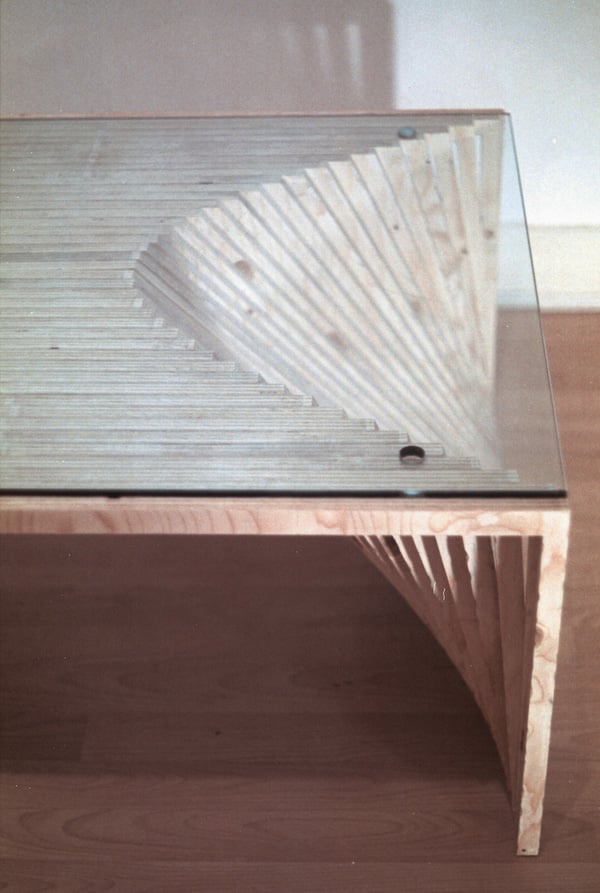Originally designed as a base for a salvaged piece of glass, the Lofting Table merges creative construction methods with classic style that has a subtle nautical feel. The name is derived from the traditional lofting technique used to plot curves in boat-building; an unusual method for the construction of a timber table. Using a combination of 3D CAD technology & the simple jointing method, the construction is based around laminating horizontal layers together to form a single complex 3D geometry.
A series of straight edged plywood chords combine to describe a complex shape formed by the extrusion between a straight line (at the table base) and a curved-edged top. The separate plywood pieces are laminated (via dowels) together by hand to form a continuous, composite surface, which extends the layered surface effect of the exposed plywood lamina. Once all pieces are combined, the shape gives the table an overall stability which allows for the thinness of the members.
3D CAD software was used to establish the form, which was then sliced into strips to suit the plywood thickness and exported as 2D information to drive a CNC router. The shape of the pieces means that they can be nested within sheets of plywood to minimise cutting wastage. The table is hand-finished and sealed with a natural wax to enhance the exposed plywood grain.
Designer: Matthew Jones

